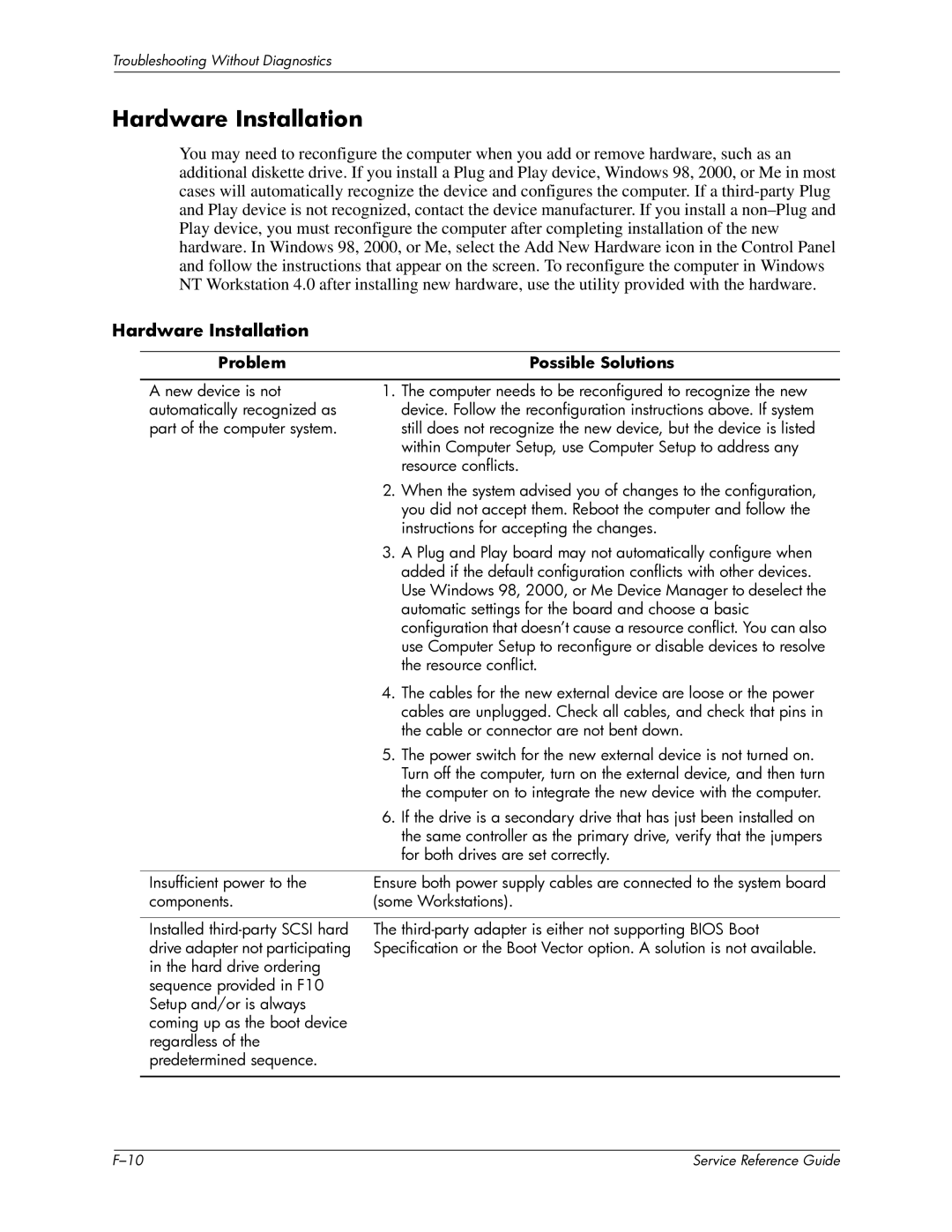
Troubleshooting Without Diagnostics
Hardware Installation
You may need to reconfigure the computer when you add or remove hardware, such as an additional diskette drive. If you install a Plug and Play device, Windows 98, 2000, or Me in most cases will automatically recognize the device and configures the computer. If a
Hardware Installation
Problem |
| Possible Solutions |
|
|
|
A new device is not | 1. | The computer needs to be reconfigured to recognize the new |
automatically recognized as |
| device. Follow the reconfiguration instructions above. If system |
part of the computer system. |
| still does not recognize the new device, but the device is listed |
|
| within Computer Setup, use Computer Setup to address any |
|
| resource conflicts. |
| 2. | When the system advised you of changes to the configuration, |
|
| you did not accept them. Reboot the computer and follow the |
|
| instructions for accepting the changes. |
| 3. A Plug and Play board may not automatically configure when | |
|
| added if the default configuration conflicts with other devices. |
|
| Use Windows 98, 2000, or Me Device Manager to deselect the |
|
| automatic settings for the board and choose a basic |
|
| configuration that doesn’t cause a resource conflict. You can also |
|
| use Computer Setup to reconfigure or disable devices to resolve |
|
| the resource conflict. |
| 4. | The cables for the new external device are loose or the power |
|
| cables are unplugged. Check all cables, and check that pins in |
|
| the cable or connector are not bent down. |
| 5. The power switch for the new external device is not turned on. | |
|
| Turn off the computer, turn on the external device, and then turn |
|
| the computer on to integrate the new device with the computer. |
| 6. If the drive is a secondary drive that has just been installed on | |
|
| the same controller as the primary drive, verify that the jumpers |
|
| for both drives are set correctly. |
|
| |
Insufficient power to the | Ensure both power supply cables are connected to the system board | |
components. | (some Workstations). | |
|
| |
Installed | The | |
drive adapter not participating | Specification or the Boot Vector option. A solution is not available. | |
in the hard drive ordering |
|
|
sequence provided in F10 |
|
|
Setup and/or is always coming up as the boot device regardless of the predetermined sequence.
| Service Reference Guide |
